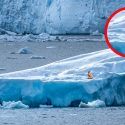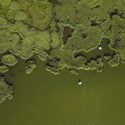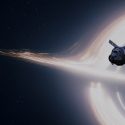A black hole is on a collision course with our Sun. And there’s nothing left for you to do except sit back and watch the destruction of our entire Solar System. How exactly would this epic collision unfold? How would this black hole end up in our planetary neighborhood? And what would it be like to witness this all from Earth?
A black hole is not much different than any other object that has mass. Except it’s dense. Really dense. All the matter it possesses is compressed to an infinitely small point at its center called a singularity. Most black holes are the remnants of massive stars. And just like the stars they used to be, black holes have a strong gravitational pull.
The more matter compressed into its singularity, the stronger the gravity. There could be as many as 40 quintillion black holes in the observable Universe. Many are located at the centers of their galaxies, like Sagittarius A*, the closest known black hole to us. It resides right in the center of the Milky Way. But black holes could also go rogue.
After an extreme event like a collision between two galaxies, a black hole can break free and start to wander. There could be 12 of these rogue black holes in our galaxy alone. And one could be headed toward the Sun right now. If a wandering black hole were headed toward our Solar System, it would first reach the Oort Cloud.
That’s the sphere of icy objects surrounding the Solar System, two light-years away from us. As soon as a black hole came too close, the icy bodies in this region would be ejected from their orbits. You wouldn’t be able to see the black hole for yourself until it reached the ice giants, Neptune and Uranus. Looking through a powerful telescope, you could see the gasses being pulled away from these planets.
All the gasses and dust torn from Neptune and Uranus would form a region around the black hole known as an accretion disk. This super-heated collection of gas and dust would orbit the black hole, making it visible. As it continued on its destructive path, you’d witness Jupiter and Saturn meet a similar fate. You’d be able to see with your own naked eye these gas giants disappearing from our night sky.
Rocky inner planets like Mars, Venus and Mercury would also be sucked into the black hole and destroyed into nothingness as you watched in horror. Only Earth would be spared. Not really, of course. I just wouldn’t want you to miss out on your front row ticket to the destruction of the Solar System. As the black hole approached our Sun, you might think it would swallow it in one blazing gulp.
Instead, the strong gravitational pull would begin to pull matter from the Sun. Just like a strand being pulled from a ball of yarn. Huge portions of gas would be ripped away from it. And they would spin around the black hole, joining the accretion disk formed by the gas and dust of all our neighboring planets. This tearing apart of the Sun would keep going until our star no longer existed.
What’s left behind would be nothing more than a gas cloud. Only the very end of the tail of this cloud might be able to escape the fate of being pulled into the black hole. As the Sun’s matter was being absorbed, lethal amounts of ultraviolet and X-ray radiation would be released in fiery explosions. This radiation would be hurled right in your direction back on Earth.
You wouldn’t know the ultimate fate of the Sun for eight minutes. That’s how long the light would take to reach us. But instead of the light source of our Solar System disappearing entirely right away, the black hole itself could become extremely bright. Possibly trillions of times brighter than the Sun. With the Sun swallowed up, the stability of what’s left of our Solar System would be completely destroyed.
An entirely new gravitational balance would need to be established. In addition to all the lethal radiation raining down on Earth, extreme tidal forces would push and pull at the planet. This would cause massive earthquakes, volcanic eruptions and tsunamis.
Eventually, Earth would crack into pieces. Or maybe in the best case scenario, unceremoniously ejected from the Solar System. The reality is you and everything on our planet would be pulled right into the accretion disk along with all the other matter in our Solar System. So now you’d have a new front row ticket. To the inside of a black hole.
Sources
- “What Exactly Is A Black Hole Event Horizon (And What Happens There)?”. Charles Q. Choi. 2019. space.com.
- “What If Planet Nine Is A Baby Black Hole?”. Paul Sutter. 2021. livescience.com.
- “What Happens At The Center Of A Black Hole?”. Paul Sutter. 2022. space.com.
- “What Is A Black Hole?”. 2014. nasa.gov.
- “Black Holes Caught In The Act Of Swallowing Stars”. Daniel Clery. 2020. science.org.



























